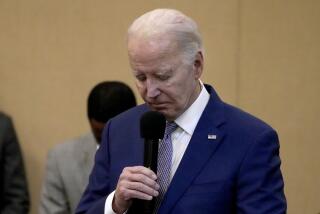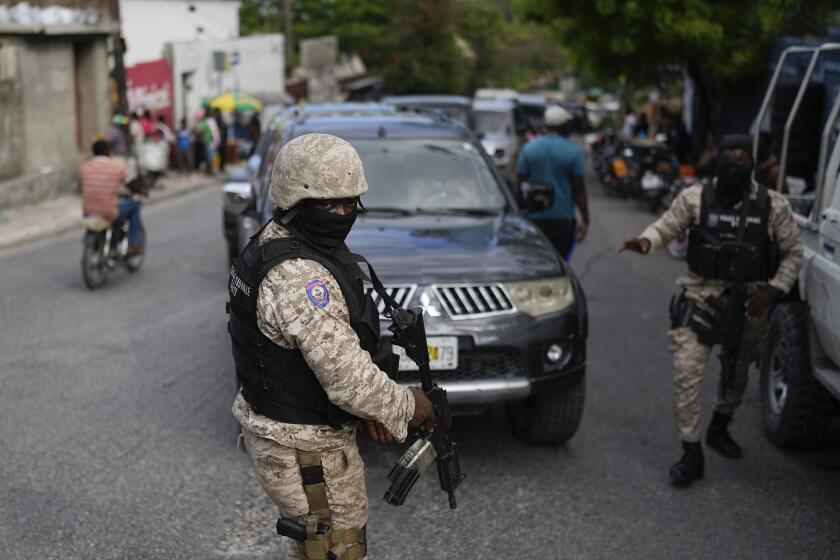Congress zooms in on drone killings

WASHINGTON -- Once a month, a group of staff members from the House and Senate intelligence committees drives across the Potomac River to CIA headquarters in Virginia, assembles in a secure room and begins the grim task of watching videos of the latest drone strikes in Pakistan and Yemen.
Sometimes they see Hellfire missiles hit buildings after suspected terrorists have entered. Other times they can make out a group or a vehicle consumed in a fiery blast. Occasionally, a smaller explosion kills just one person, as officials say happened when a missile this month crashed into a room in Pakistan’s tribal areas and killed Abu Yahya al Libi, Al Qaeda’s No. 2.
The videos are much sharper than the grainy drone imagery that can be viewed on the Web. “You can see exactly what is going on,” said a senior congressional aide, who, like other officials, spoke about the highly classified program on the condition he not be identified.
The regular review of some of the most closely held video in the CIA’s possession is part of a marked increase in congressional attention paid to the agency’s targeted killing program over the last three years.
The oversight, which has not previously been detailed, began largely at the instigation of Sen. Dianne Feinstein (D-Calif.), chair of the Senate Intelligence Committee, officials said.
The lawmakers and aides with the intelligence oversight committees have a level of access shared only by President Obama, his top aides and a small number of CIA officials.
In addition to watching video, the legislative aides review intelligence that was used to justify each drone strike.
They also sometimes examine telephone intercepts and after-the-fact evidence, such as the CIA’s assessment of who was hit.
“We receive notification with key details shortly after every strike, and we hold regular briefings and hearings on these operations,” Feinstein wrote in May in a letter sent in response to a column that ran in The Times questioning the oversight of drone strikes.
“Committee staff has held 28 monthly in-depth oversight meetings to review strike records and question every aspect of the program including legality, effectiveness, precision, foreign policy implications and the care taken to minimize noncombatant casualties.”
Feinstein did not respond to requests last week for an interview.
The United States faces international criticism for its drone strikes. Officials in Pakistan, in particular, have complained that strikes have killed many civilians, and some members of Congress have recently raised questions about “signature” drone attacks based on an individual’s pattern of behavior.
Congressional officials say their review has made the CIA more careful. They are hard-pressed, however, to point to any changes the agency has made. The CIA declined to comment.
If the congressional committees objected to something, the lawmakers could call CIA leaders to testify in closed investigative hearings. If unsatisfied, they could pass legislation limiting the CIA’s actions.
“I don’t know that we’ve ever seen anything that we thought was inappropriate,” one senior staff member said.
Still, the drone program is under far more scrutiny than in the past, congressional officials say. Even after drone strikes against militants in Pakistan were expanded significantly by President George W. Bush in summer 2008, the strikes were subject to little congressional review, according to former intelligence officials.
“During my time, the committees didn’t do any oversight on drone strikes to speak of,” said a former senior CIA official who left in 2009. “They would be informed when a strike was carried out. No staffers ever came out and watched video.”
As the program intensified under Obama, Feinstein became determined to ensure that it was as precise as the CIA had been claiming. “That’s been a concern of mine from the beginning,” Feinstein said in little-noticed comments after the raid that killed Osama bin Laden in May 2011. “I asked that this effort be established. It has been. The way in which this is being done is very careful.”
Senators and House members occasionally watch the videos. But much of the oversight is conducted by a core group of intelligence committee aides. They include some veteran analysts, such as Tom Corcoran, senior policy advisor to the House committee, who is a Navy Reserve intelligence officer and who worked for seven years for the Defense Intelligence Agency. He did not comment for this report.
Other top aides have less intelligence experience. The Republican staff director and another advisor to Sen. Saxby Chambliss of Georgia, the ranking Republican on the intelligence panel, spent most of their careers on the agriculture committee, which Chambliss once headed. They bring a fresh perspective, colleagues say.
Members of the oversight committees are limited in their ability to challenge the CIA’s conclusions, a senior staff member cautioned. “I can watch video all day long -- I’m not an imagery analyst,” he said. “I can only look to see if the description reasonably concurs with what my untrained eyes are seeing.”
Critics argue that drone strikes sometimes hit the wrong people.
“I know for a fact that civilians are being killed in these strikes,” said Brigadier Abdullah Dogar, defense attache at Pakistan’s embassy in Washington. He cited a now infamous attack on March 17, 2011, in Datta Khel, North Waziristan, which the Pakistanis insist struck a tribal council and killed as many as 45 people, most of whom were not connected to Al Qaeda. The U.S. has been equally insistent that those killed were militants.
The Washington-based New America Foundation says that as many as 471 civilians have been killed in the strikes since 2004. Peter Bergen, an analyst who supervises the foundation’s tally, called it “the least unreliable thing out there in the absence of any real U.S. government transparency.”
But lawmakers on the House and Senate oversight committees say media reports out of the tribal areas of Pakistan and Yemen list casualties that are refuted by video evidence. For example, the BBC and other news organizations quoted local officials saying that 15 “suspected militants” were killed in the June 4 Pakistan strike that killed al Libi. But the video shows that he alone was killed, congressional aides say.
Rep. Adam B. Schiff, a Democrat from Burbank and an intelligence committee member who has watched videos of the strikes, said, “If the American people were sitting in the room, they would feel comfortable that it was being done in a responsible way.”
Congressional criticism of drone strikes has been rare. But this month, 26 lawmakers, all but two of them Democrats, signed a letter to Obama questioning so-called signature strikes, in which the U.S. attacks armed men who fit a pattern of behavior that suggests they are involved in terrorist activities.
Signature strikes have been curbed in Pakistan, where they once were common, but this year Obama gave the CIA permission to conduct them in Yemen, where an Al Qaeda affiliate that has targeted the United States has established a safe haven in the south.
The lawmakers expressed concern that signature strikes could kill civilians. They added: “Our drone campaigns already have virtually no transparency, accountability or oversight.”
Rep. Hank Johnson (D-Ga.) signed the letter even though he is a member of the House Armed Services Committee, which oversees some drone attacks. “We need to know that innocent people are not being haphazardly killed because of bad information,” he said.
Schiff, a former federal prosecutor, said he had seen firsthand that the CIA took “extraordinary care” in its targeting.
But he also said he was not convinced, in signature strikes against military-aged males, that every person killed was a militant, suggesting some could have been tribesmen paid to help terrorists.
ken.dilanian@latimes.com
More to Read
Start your day right
Sign up for Essential California for news, features and recommendations from the L.A. Times and beyond in your inbox six days a week.
You may occasionally receive promotional content from the Los Angeles Times.







